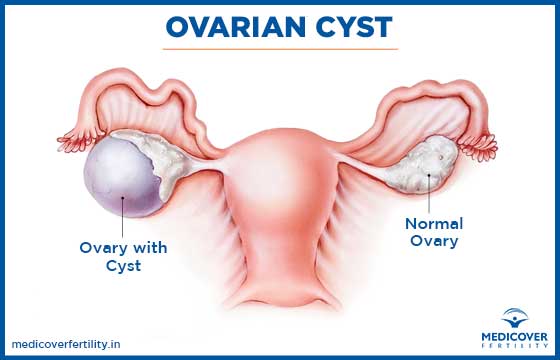Contents
What are cysts?
There are two types of ovarian cysts: the most common (90%) are functional cysts. They come from a malfunction of the ovary. The second category is that of so-called organic cysts due to impaired ovarian function. Among these, dermoid cysts, endometriosis or those encountered in polycystic ovary syndrome, are likely to impair ovulation.
Follicular cysts
They belong to the family of functional cysts. From hormonal disturbances lead to abnormal enlargement of a follicle which does not rupture and therefore does not release the egg. Consequence: there is no ovulation. Fortunately, these cysts often go away on their own after a few menstrual cycles. If it’s not the case, medical treatment (estrogen-progestogen pill) may be offered so that everything is in order. Then an ultrasound check is done after two or three months to make sure the cyst is gone. Most often, it is discovered by chance, but from time to time, pelvic pain leads to a consultation.
Endometriotic cysts
They are commonly found in women with infertility. They are the result of a disease called endometriosis, in which tissue from the endometrium (lining inside the uterus) grows in other organs. At the end of the cycle, the endometrium bleeds and menstruation arrives. The presence of blood in organs where it cannot be evacuated, such as the ovary, causes painful bruises that take a long time to disappear. These cysts are also called: “chocolate cysts”. When the cyst becomes too large, treatment involves removal of the cyst, most often by laparoscopy. About 50% of surgically treated patients succeed in becoming pregnant.
Polycystic ovary syndrome or “ovarian dystrophy”
One in ten women is affected by this condition caused by a hormonal abnormality, the origin of which is not well known. Ultrasound can diagnose it and shows enlarged ovaries with more than twelve small follicles on their surface. Symptoms of this disease are manifested by anovulation, irregular or absent periods and a surge of male hormones sometimes resulting in acne and increased hair growth. Weight gain and even obesity is common. Depending on the importance of the signs, the disease can exist in a mild, moderate or severe form. There is no cure for the disease and the symptoms are treated on a case-by-case basis. Also the treatment is adapted according to each patient. To allow pregnancy, hormonal stimulation can restore ovulation. In vitro fertilization is also a solution.










